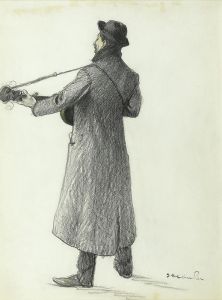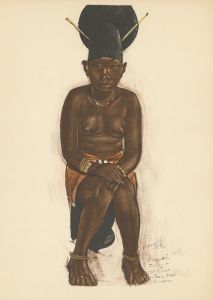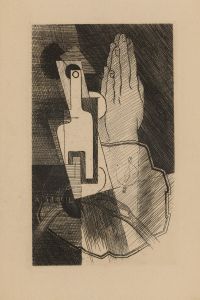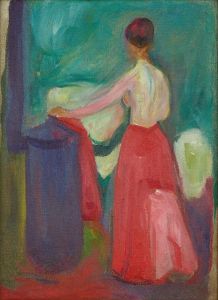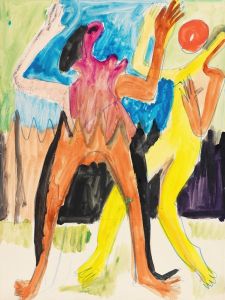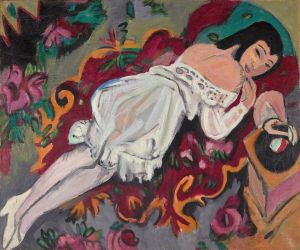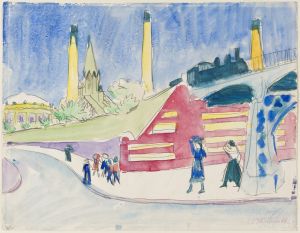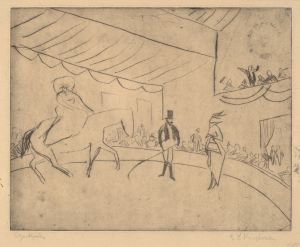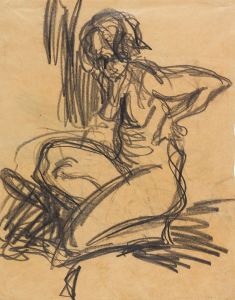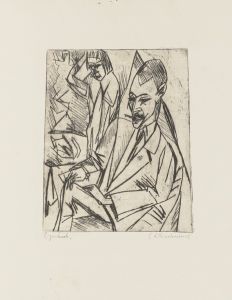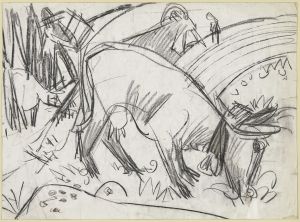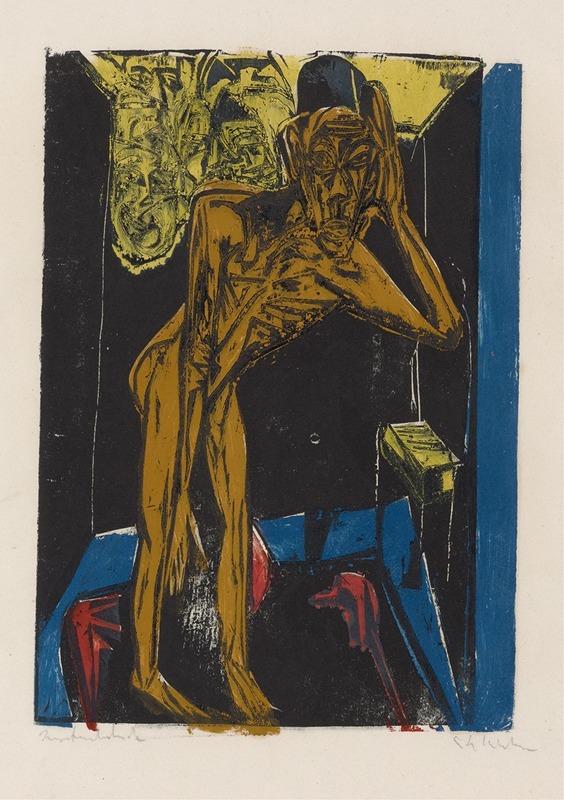
Schlemihl in der Einsamkeit des Zimmers
A hand-painted replica of Ernst Ludwig Kirchner’s masterpiece Schlemihl in der Einsamkeit des Zimmers, meticulously crafted by professional artists to capture the true essence of the original. Each piece is created with museum-quality canvas and rare mineral pigments, carefully painted by experienced artists with delicate brushstrokes and rich, layered colors to perfectly recreate the texture of the original artwork. Unlike machine-printed reproductions, this hand-painted version brings the painting to life, infused with the artist’s emotions and skill in every stroke. Whether for personal collection or home decoration, it instantly elevates the artistic atmosphere of any space.
"Schlemihl in der Einsamkeit des Zimmers" (Schlemihl in the Loneliness of the Room) is a painting by the German expressionist artist Ernst Ludwig Kirchner. Created in 1915, this work is a significant example of Kirchner's exploration of psychological themes and his distinctive style that contributed to the German Expressionist movement.
Ernst Ludwig Kirchner (1880-1938) was a founding member of the artist group Die Brücke (The Bridge), which played a crucial role in the development of Expressionism in early 20th-century Germany. The group sought to create a new form of artistic expression that broke away from traditional academic standards and embraced more raw and emotional content.
"Schlemihl in der Einsamkeit des Zimmers" depicts a solitary figure, Schlemihl, in an interior space. The character of Schlemihl is derived from the novella "Peter Schlemihls wundersame Geschichte" (Peter Schlemihl's Miraculous Story) by Adelbert von Chamisso, published in 1814. In the story, Schlemihl sells his shadow to the devil in exchange for a bottomless wallet, leading to a life of isolation and regret. Kirchner's painting captures the essence of Schlemihl's loneliness and existential despair.
The painting is characterized by Kirchner's use of bold colors, dynamic brushstrokes, and distorted forms, which are hallmarks of his style. The composition emphasizes the emotional state of the subject, with the figure appearing elongated and somewhat contorted, reflecting a sense of inner turmoil. The room itself is depicted with sharp angles and a claustrophobic atmosphere, enhancing the feeling of isolation.
Kirchner's work during this period was heavily influenced by his personal experiences and the broader socio-political context of the time. In 1915, during World War I, Kirchner volunteered for military service but was soon discharged due to a nervous breakdown. This experience profoundly affected his mental health and artistic output, leading to works that often explored themes of anxiety, alienation, and the human condition.
"Schlemihl in der Einsamkeit des Zimmers" is a poignant example of how Kirchner's art reflects his inner struggles and the broader existential concerns of the early 20th century. The painting is part of the collection of the Brücke-Museum in Berlin, which houses a significant number of works by Kirchner and other members of Die Brücke.
Kirchner's contributions to art were recognized posthumously, and he is now considered one of the most important figures in German Expressionism. His works continue to be studied and appreciated for their emotional depth, innovative use of color and form, and their reflection of the turbulent times in which he lived.





